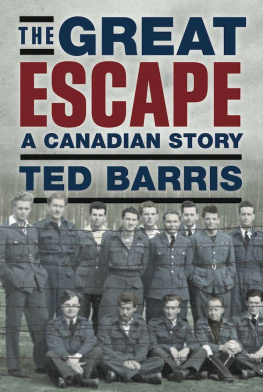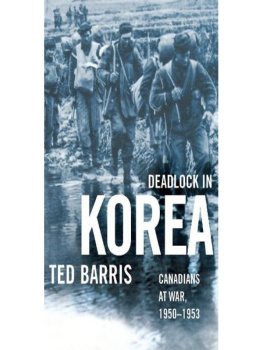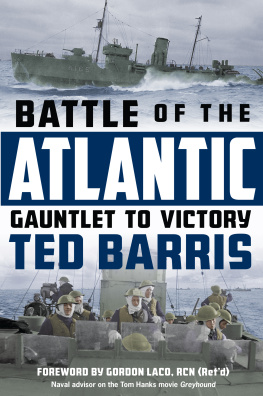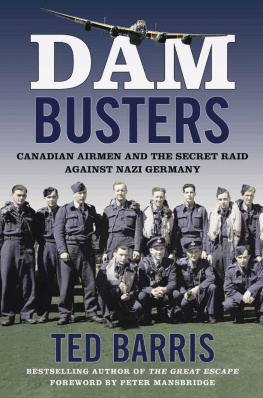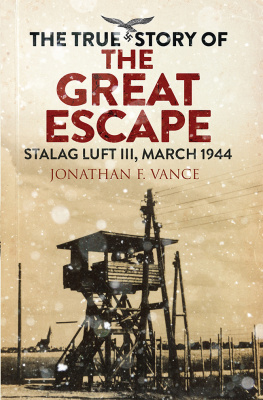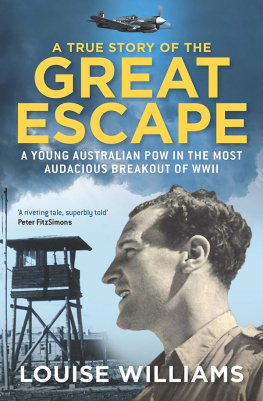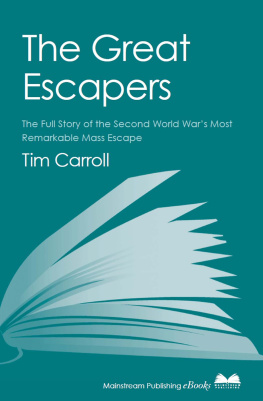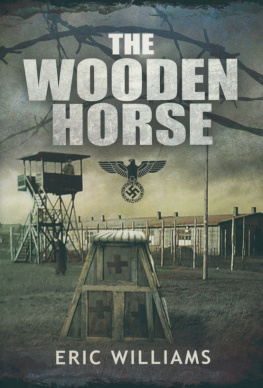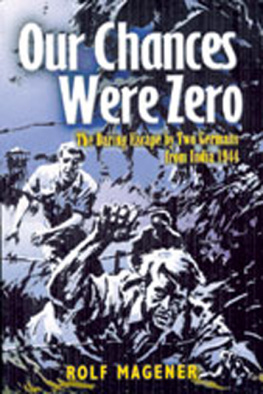Dedication
To air force veteran Charley Fox and military history
buff Dave Zinkboth gone nowwho challenged me
to properly retell this great, great story.
The author and publisher gratefully acknowledge the permission granted to reproduce the copyright material in this book. Every effort has been made to trace copyright holders and to obtain their permission for the use of copyright material. The publisher apologizes for any errors or omissions and would be grateful if notified of any corrections that should be incorporated in future reprints or editions of this book.
The author would like to acknowledge the following for the use of published and unpublished works as follows:
A Gallant Company, Jonathan F. W. Vance, permission from copyright holder.
Air Force Association video interviews, 1970s and 1989, permission from rights holders National Air Force Museum of Canada, Trenton.
Bonds of Wire, Kingsley Brown, permission from copyright holder Ethel Alle.
Forced March to Freedom, Robert Buckham, permission from copyright holder Nancy Buckham.
Frank Sorensen collection, permission from Glenn, Stephen, and Vicki Sorensen.
Goon in the Block, Don Edy, permission from copyright holder.
In Enemy Hands, Daniel G. Dancocks, permission sought through Hurtig, Random House.
Its All Pensionable Time, George Sweanor, permission from copyright holder.
John Colwell diary, permission from copyright holder Harold Johnstone.
John Weir letters, permission from Mrs. Frances Weir.
Lonesome Road, George Harsh, permission from publisher W. W. Norton, New York.
One Mans War: Sub Lieutenant R. E. Bartlett, RN Fleet Air Arm Pilot, Stuart E. Soward, permission from copyright holder Sheila Soward.
Serving and Surviving: An Airmans Memoirs, John R. Harris, permission from copyright holder.
The Great Escape, Paul Brickhill, permission from rights holders David Higham Associates, UK.
The Great Escape, Stalag Luft III (from the original drawings made by Ley Kenyon 1943), permission from copyright holders RAF Museum, Hendon, UK.
The Tunnel King: The True Story of Wally Floody and the Great Escape, Barbara Hehner, permission from copyright holder.
They Were So Young, Patricia Burns, permission from copyright holder.
Tom, Dick and Harry of Stalag Luft III, Bob Nelson, unpublished manuscript, permission from Sally Hutchison.
Acknowledgements
T HE CONTEMPORARY ROAD to Zagan is nearly as inhospitable and neglected as it must have been in 1942 , when the town became neighbour to a prisoner-of-war camp. Even when I travelled on it in 2010 , most of the one hundred miles of road southeast of Berlin, primarily in western Poland, didnt seem to have ever enjoyed priority status. The post-Soviet-era asphalt was still as patchy, the lanes still as poorly marked, and the rough countryside terrain still encroaching the roadside shoulders right to the road surface as it likely had when the Nazis occupied Poland during the Second World War.
Likewise, the Zagan (the Polish spelling of Sagan) train station at the edge of town looked as if it hadnt enjoyed any remodelling since it was built in the early 1900s. When I walked inside, I could almost see the first wave of Great Escape fugitives hurrying through ticket queues and platform document checks by guards in the morning gloom on March 25 , 1944 , to get aboard the Breslau-to-Berlin express train without raising suspicion. And the treesthe omnipotent pine forest to the southbetween the railway platforms and the prison camp looked as dense and claustrophobic as they must have been to the air force officers trying to escape a generation ago.
When I approached the actual North Compound site at Stalag Luft III, now overgrown with mature trees, dense underbrush, and weeds, I could see scattered bricks and concrete pads where the barracks huts had stood on blocks. None of the buildings remained. I could see the foundations of the infirmary, the cooler, and the coal store. Beyond it, farther south, I could see the fire pool, the cement floors of the kitchens (with scorched circles where huge soup cauldrons had boiled every day). Beyond them lay the brick foundation of the North Compound theatre (where a fourth tunnel, George, has just recently been unearthed). And finally, on the surface of the still very sandy soil, I walked along a walkway of crushed stone with wooden borders, just twenty inches wide (the same width of the tunnel), showing above ground where tunnel Harry had stretched under groundsome 336 feetfrom the concrete pad beneath Hut 104 to beyond the Stalag Luft III fence, but just short of the woods.
I imagined about eighty POWs who had all served in one capacity or another in the manufacture of the tunnel excavation and its ancillary requirements (sand dispersal, security, intelligence, forgery, document production, tailoring, language study, compass manu facture, ration supplies, et cetera) making their way from inside the North Compound. I visualized one POW disappearing into Harry every three minutes through the night of March 2425, travelling along the trolley way northbound (beneath where I stood in 2010), and then popping up from the other vertical shaft beyond the prison camp wire. This was the home of the Great Escape, or at least an attempt to cause enough havoc behind German enemy lines to suck away valuable manpower in the search and recapture of the escapers.
A few thousand feet away, I came to the cemetery of those whod died in captivity during their existence at Stalag Luft III. Next to the individual tombstones, I found the stone memorial to the fifty Commonwealth air force officers murdered by the Gestapo after the breakout. Here, too, I sensed the blood of six Canadians, or at least the ashes in urns buried there during a ceremony on December 4 , 1944 (the ashes later exhumed and reburied in the military cemetery at Poznan, Poland). This was the home of the Great Escape. This was the place where myth and reality had inspired books, documentaries, and Hollywood movies. Arriving there, walking there, remembering there in 2010, moved me emotionally, and moved me professionally to fulfill a longtime promise to my veteran friend, RCAF fighter pilot Charley Fox, to tell the story of the Great Escape the way it could and should be toldas a Canadian story.

